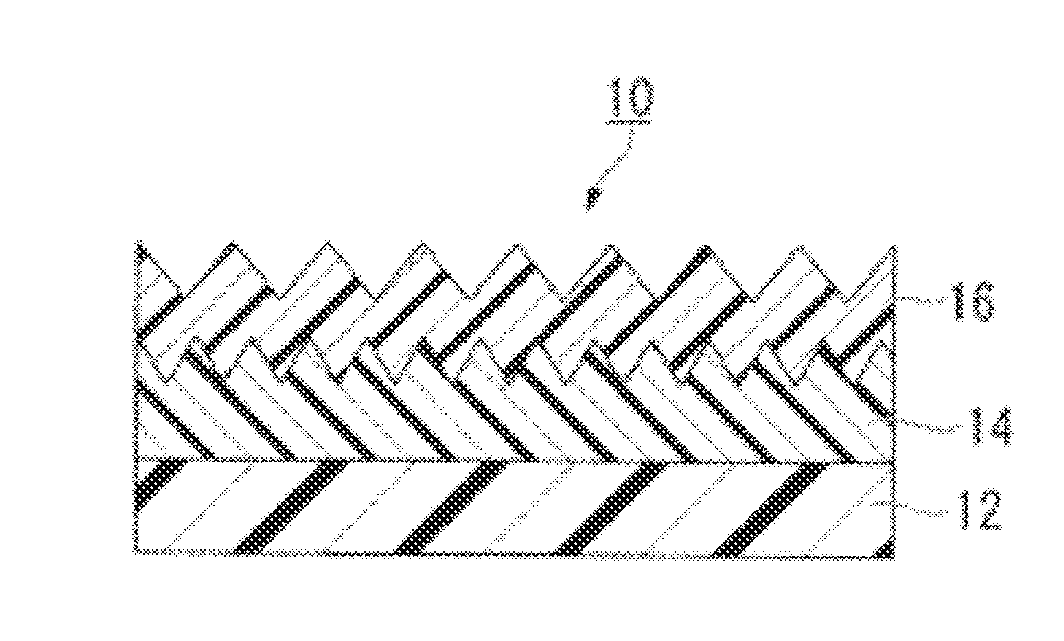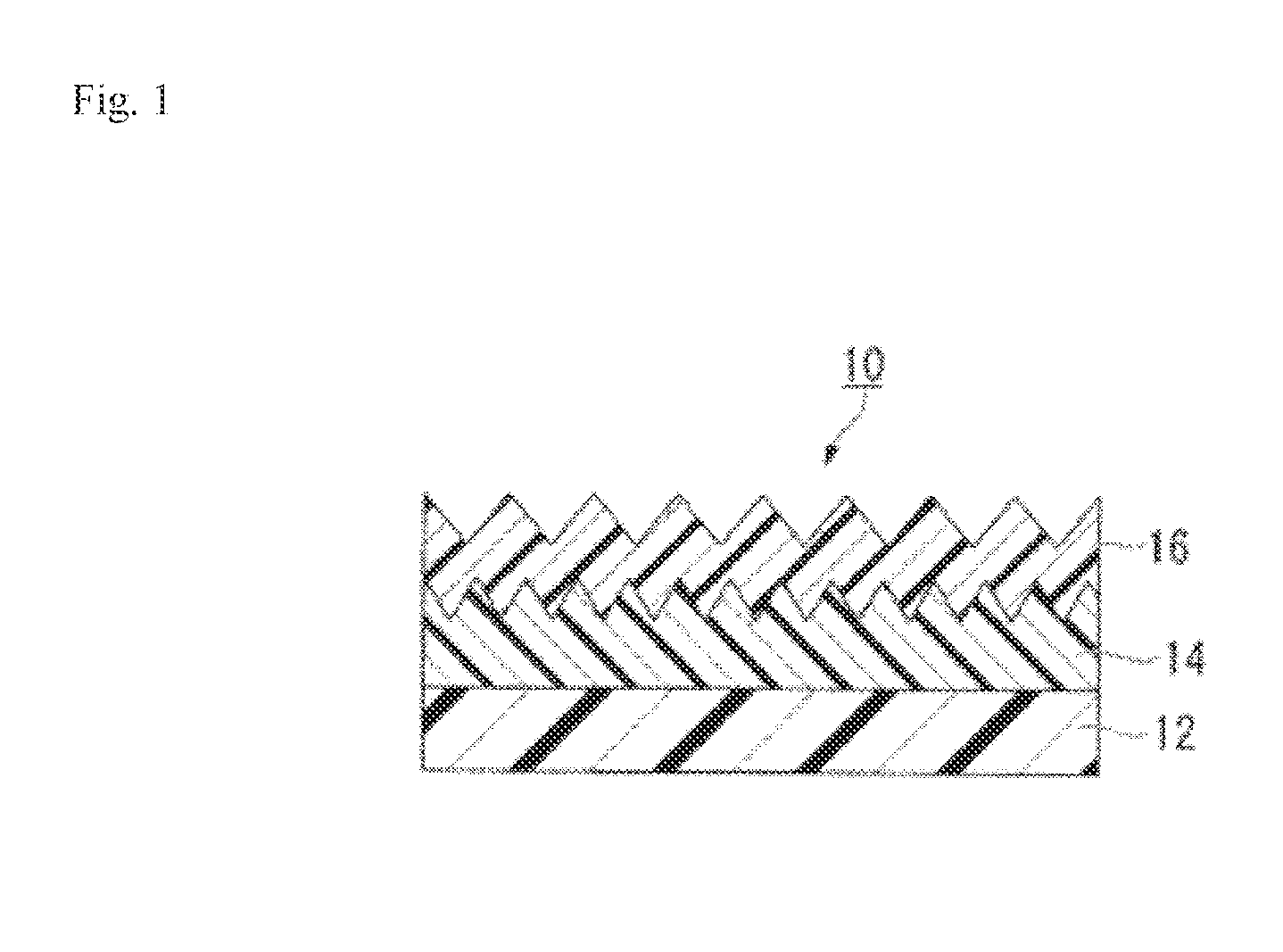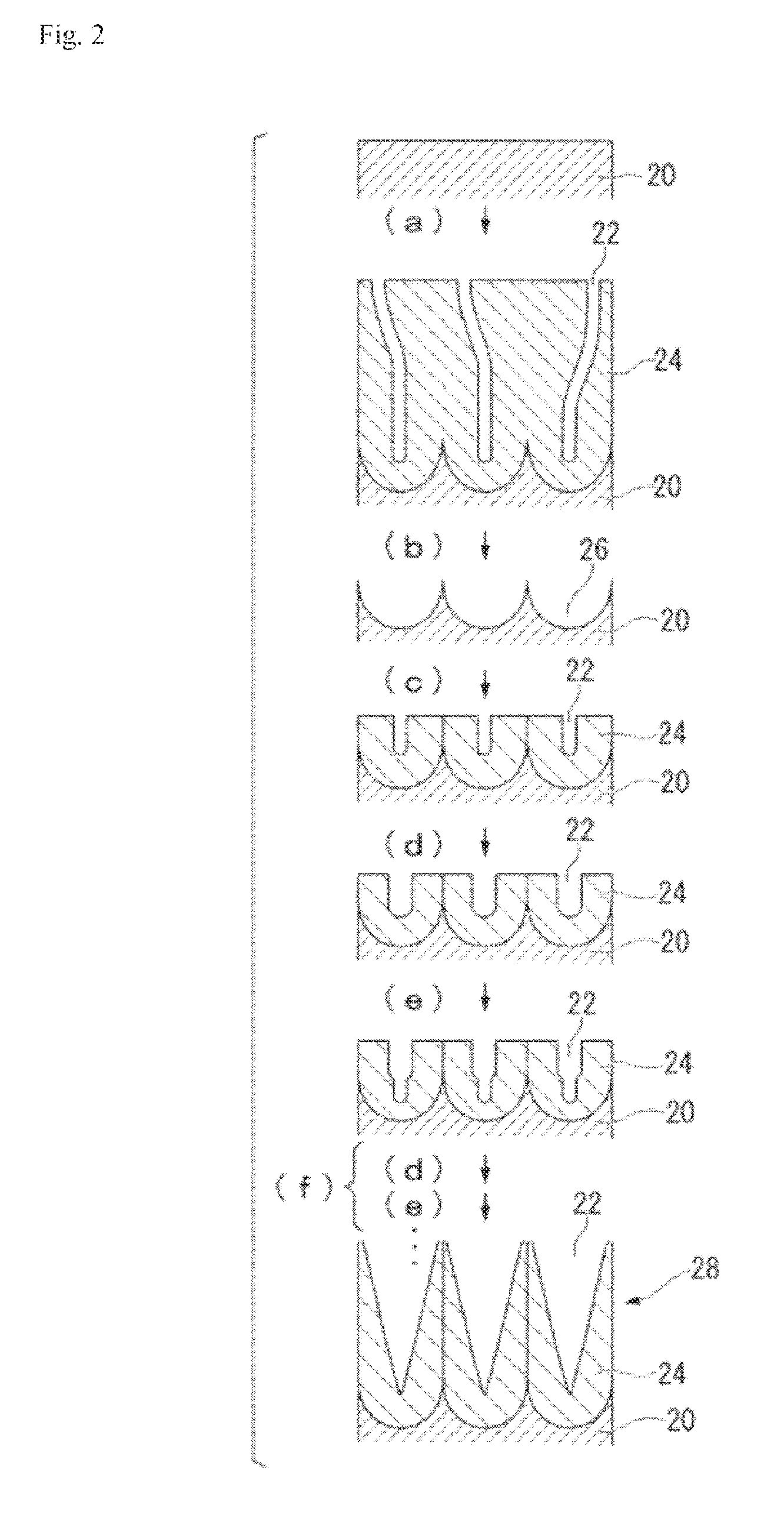Multilayer structure, method for producing same, and article
a multi-layer structure and production method technology, applied in the direction of manufacturing tools, electric/magnetic/electromagnetic heating, instruments, etc., can solve the problems of difficult to impart all of the optical performance, the surface of the fine relief structure exhibits lower abrasion resistance and durability, and the nanoscale convex portion is easily destroyed, etc., to achieve excellent optical performance and abrasion resistance, and high pencil hardness
- Summary
- Abstract
- Description
- Claims
- Application Information
AI Technical Summary
Benefits of technology
Problems solved by technology
Method used
Image
Examples
examples
[0395]Hereinafter, the invention will be described in more detail with reference to Examples.
[0396][Test 1]
[0397]Various kinds of measurements and evaluation methods in Test 1, a method for fabricating a mold, and components used in the respective Examples are as follows.
[0398]“Measurement and Evaluation”
[0399](1-1) Measurement of Pore of Mold
[0400]A part of a mold was cut, the surface and longitudinal section of the cut mold was deposited with platinum for 1 minute and observed by enlarging 20,000 times at an accelerating voltage of 3.00 kV using a field emission scanning electron microscope (“JSM-7400F” manufactured by JEOL Ltd.), the interval between adjacent pores (distance from the center of a pore to the center of an adjacent pore) was measured at 50 points, and the average value thereof was adopted as the average interval (cycle) between adjacent pores.
[0401]In addition, the longitudinal section of the mold was observed by enlarging 30000 times, and the distance between the b...
example 1-1
[0472](Step 1: Formation of Intermediate Layer)
[0473]Few drops of the resin composition A was dropped on the surface of the mold A. The resin composition A was covered with a triacetyl cellulose film (“TD8OULM” manufactured by FUJIFILM Corporation, hereinafter also referred to as the “TAC film”) having a thickness of 80 μm as the substrate while pressing and spreading the resin composition A with the TAC film. Thereafter, the resin composition A was cured by being irradiated with ultraviolet light at energy of 1000 mJ / cm2 from the TAC film side using a UV irradiating device (manufactured by Heraeus Noblelight BmbH). The cured product of the resin composition A was released from the mold A together with the TAC film, whereby a laminate film in which an intermediate layer having a fine relief structure having an average interval (cycle) between adjacent convex portions of 100 nm and an average height of the convex portions of 180 nm (aspect ratio: 1.8) on the surface and a film thickn...
examples 1-2
[0479]The multilayer structure was produced in the same manner as in Example 1-1 except that the resin composition D was changed to the resin composition E in the step 2, and the multilayer structure thus obtained was subjected to various kinds of measurements and evaluations. The results are presented in Tables 1 and 2.
[0480]Incidentally, the average intervals of adjacent convex portions, average heights of the convex portions, and aspect ratios of the fine relief structures formed on the surfaces of the intermediate layer and the outermost layer were the same as those in Example 1-1.
PUM
| Property | Measurement | Unit |
|---|---|---|
| wavelength | aaaaa | aaaaa |
| wavelength | aaaaa | aaaaa |
| wavelength | aaaaa | aaaaa |
Abstract
Description
Claims
Application Information
 Login to View More
Login to View More - R&D
- Intellectual Property
- Life Sciences
- Materials
- Tech Scout
- Unparalleled Data Quality
- Higher Quality Content
- 60% Fewer Hallucinations
Browse by: Latest US Patents, China's latest patents, Technical Efficacy Thesaurus, Application Domain, Technology Topic, Popular Technical Reports.
© 2025 PatSnap. All rights reserved.Legal|Privacy policy|Modern Slavery Act Transparency Statement|Sitemap|About US| Contact US: help@patsnap.com



